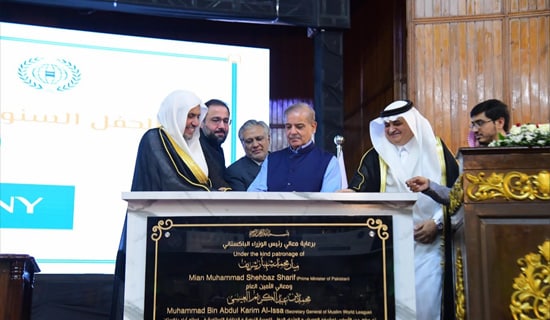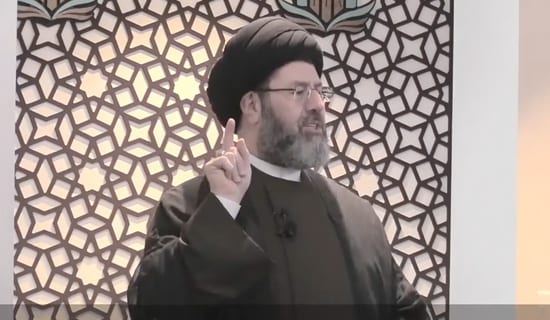
Syrian refugee child. Source: Dailymail.co.uk, March 31, 2015.
Introduction
In 2015, the United Nations adopted the 2020 Agenda for Sustainable Development as a vision for transforming global development over the next 15 years "to be building a more peaceful, prosperous, sustainable, and inclusive future." The agenda asserts that young women and men "are critical agents of change, and are central to achieving sustainable development."
The report under review, the sixth in a series of reports on Arab development issued by the United Nations Development Programme,[1] was released on November 29, 2016 at the American University in Beirut.
The "Arab Spring" And Its Aftermath
In presenting the report, a UNDP official highlighted the fact that its publication comes five years after the events of 2011, referred to rather optimistically at the time as "The Arab Spring." The contribution of the youth in the promising events of 2011 was considered by some as "a glimmer hope for a new renaissance," whereas others considered it "a seditious influence dragging the region into chaos and jeopardizing its future." The report offers a comprehensive and detailed analysis of the challenges youth face in terms of human development process and seeks to bring these young people "back into the centre – politically, economically and socially...
While we would have wished otherwise, in reviewing the report we find that the critics of the "Arab Spring" were more realistic in their assessment of the events of 2011 than those who were inclined to see bright stars in the sky. If anything, Arab youth today remain mired in poverty; they are politically marginalized and voiceless, economically disenfranchised, and socially prone to radicalization and violence. Theirs is a fragile and often volatile existence.
Overview Of The Arab Society
The report highlights the fact that in the last decade the region has experienced "the most rapid increase in war and violent conflict" compared with other regions of the world. The Arab world also has "the dubious distinction" of comprising the largest number of failed states showcasing a high scale of "fragility and failure" in addition to being the source of the largest number of refugees and displaced people. While the report would not predict the level of conflict in the region, it does project that number of people living in conflict areas will increase from 250 million in 2010 to over 305 million in 2020.
Figure 8.5 (the Report's annex) shows that the Arab world is home to 5 percent of the global population but has a 45 percent share of global terrorist attacks in 2014 and 68.5 percent of battle-related deaths in that same year.
The Demographic Structure
Demographically, the Arab society is young.[2] Youth aged 15-29 comprise about 30 percent of the population, or some 105 million people. The key problem of youth is that they are part of a society that, in terms of human development index, has lagged behind all other regions of the world; by 2050, the Arab society will ahead only of sub-Saharan Africa.
Failed Economic Model
The Arab countries have pursued an economic model that has depended on "inefficient forms of intervention and redistribution that, for financing, count heavily on external windfalls, including aid, remittances and rents from oil revenues." Unlike the fast-growing East Asian countries which relied heavily on the manufacturing sector as a vehicle for job creation, the Arab economies have registered low if not negative growth.
In most Arab countries, the public sector is the dominant economic sector and has often crowded, and indeed impeded, the growth of the private sector or "forged uncompetitive and monopolistic alliances." The report also identifies other constraints to the development of the private sector – misguided economic policies, lack of credit, heavy-handed bureaucracy, poor access to external markets, export restrictions, and inefficient customs processes. These factors "have resulted in an anemic private sector that does not create a sufficient number of jobs." To sustain their legitimacy without resorting to the ballot, Arab states have used aid or, in the case of oil producing countries, oil revenues, to allocate rent through various means and methods to groups and individuals to keep them from imploding. As a result, income and wealth are not derived from "work, innovation and risk-taking." Rather, it is public largesse, that encourages cronyism, corruption and dependence on the rent giver.
The Arab Youth Of Today
SUPPORT OUR WORK

A high unemployment rate characterizes the predicament of the young people in the Arab world. According to the UNDP report, since the early 1990s unemployment among Arab youth has been nearly twice as high as the rates in other global regions. The International Labor Organization estimates that youth unemployment will keep rising, reaching 29.1 by 2019. As a result, unemployment among first-time job seekers "is often measured in years, not months." Among Arab women the unemployment rates are the highest in the world, almost double rates that among Arab men, or 48 percent versus 23 percent. What makes the unemployment so problematic is the absence of any social welfare mechanism to help Arab youth at a critical time when they seek to integrate in the economic fabric of their respective countries.
The figures on unemployment are often misleading, as the real rates are often higher. The UNDP report concedes that employment among youth is "often precarious and informal." Many entrants to the labor market settle for insecure jobs at low wages in the informal sector (casual jobs, unpaid jobs [helping family], and subsistence agriculture.)
Job creation remains one of the most challenging responsibilities of the Arab governments. As the work force continues to grow in keeping with high birth rate, the report identifies the need for the creation of 60 million new jobs in the next decade to absorb the large number of workforce entrants. It is a tall order by any criterion.
Migration As A Path to Relief
Disenchanted with narrow choices, the youth, as the reports points out, are "looking elsewhere for room to breathe." For the many young people, particularly those who are skilled or highly skilled, who were not fortunate to find jobs in their countries or have determined that the prospects of future professional growth are limited, if not non-existent, migration has become the path to salvation. Egypt, the largest Arab country, is also the largest source of outward migration. Between 2010 and 2014, 5.41 million Egyptians left their country. The total number of Arab emigrants during the same time span is estimated at 22 million.
According to the report, during the 2000s Arab countries "had among the highest rates worldwide of skilled emigration." For example, in 2010, 62 percent of Jordanian migrants abroad were university graduates. The share of Tunisians aged 15-29 willing to emigrate escalated from 22 percent in 1995 to 76 percent in 2005. For many authoritarian regimes, the emigration of malcontent young men (and some women) reduces the risks of social and political implosion.
Obviously, the loss of human capital across the Arab countries must be quite enormous. However, there is one significant advantage to the emigration of skilled Arabs: the remittances they send home add to GDP. In 2012, remittances from GCC (Gulf Cooperation Council) countries to selected Arab countries amounted to $17.34 billion, or about 50 percent of total GCC remittances. Three countries, Egypt, Lebanon and Jordan, receive the lion's share of these remittances, amounting to $20,515, $7,472 and $3,643 million respectively, for total of $31,630 million, or 89.9 percent of total remittances. In 2013, Arab migrant remittances as a share of GDP was highest in Lebanon (17.7%), followed by Palestine (14.0%), with Egypt and Morocco each at 6.6 percent.
The Challenge Of Violent Radicalization
Survey-based data indicate that religion plays a major role in the lives of citizens in the Arab countries, including the young. Figures for 2014 identify as high as 96-99 percent of respondents in Egypt, Morocco, Tunisia and Yemen saying that religion plays an important role in their lives. In secular Syria, the figure was merely 75%. The 2011 Arab Spring prompted the collapse of several Arab regimes, creating a political void which invited Islamic parties to step in. The lure of political Islam as a transcendental value, the report stresses, is not unlike classical Marxism, as "it provides an escape from oppressive reality into a world of hope."
The rise of Islamist political movements sparked a contentious debate over core societal issues: relations between religion and politics; the nexus between religious and civil forces; and, most importantly, whether Islamic political parties are capable of governing effectively.
Deprived of a political voice or prospects of participation in the political process aggravated by an overall sense of exclusion, Arab youth have become susceptible to radicalization. The UNDP report describes radicalization as "a process by which an individual or group comes to adopt increasingly political, social or religious ideas or aspirations that reject or undermine the status quo..." There are many factors that lead to radicalization, the most significant of which are those anchored in demography and urbanization. Demographically, Arab population growth rates in the past 50 years were among the highest in the world – the result of high fertility and declining infant mortality. As a result, there is a large stock of young people to be recruited. These young people are concentrated in urban areas, in substandard housing and an often harsh living environment, providing fertile ground for recruitment and radicalization.
The report points out that despite the rise of radical Islamic groups, the opinions of the youth are "diverse and dynamic." The triggers for 2011 represent a departure from the ideologies of the past, and may be "ushering [in] a new cultural epoch in the region," although there was no attempt by the authors of the report to speculate how this epoch would unfold and what direction it would take. In the meantime, Arab governments have, in the last four decades, implemented diverse instruments of suppression to insure "quietism and obedience among populations." Among these instruments are "autocrats, patriarchs, mosques, schools, the media and the mukhabarat (intelligence agencies)..." Instruments of oppression are enhanced by a high rate of unemployment and vanishing prospects of genuine reform. Not surprisingly, the life satisfaction index in the Arab countries is 15 degrees below that of other countries at similar levels of development.
Issues Of Health
The report devotes much space to the issue of health, on the simple premise that "youth well-being is generally an indicator of future adult well-being." The report laments the absence or short supply of data to measure the health status, health risks, and protective factors among the 15-29 age group. It does, however, list a litany of problems that constrain the provision of effective health services to youth, including limited resources and poor medical infrastructure. Dental and mental health services "are excluded from the health basket." The mortality rate among this young group remains relatively high due to diarrheal diseases, lower respiratory tract infections, cardiovascular and circulatory diseases, mental and behavioral disorders, transport injuries, and tuberculosis, to mention but few.
Extended conflicts have also affected health standards and services, as many hospital and clinics have been either destroyed or looted. Many of the doctors who were unable to escape were killed, often deliberately. Perhaps one of the most fascinating, if disturbing, results of conflicts was the finding that children born in Iraqi areas affected by high levels of violence are 0.8 cm (0.32 inch) shorter than children born in low-violence areas. Violent conflicts cause widespread damage to basic infrastructure, leading to the breakdown of water, transport, and sanitation systems, and the destruction of public health facilities. Most significant of all is the diversion of resources from public health to weapons.
Conflicts And Education
Prolonged conflicts in many Arab states have taken their toll on students, teachers and schools. In Yemen, the site of one of the world's greatest humanitarian crises, 1.8 million school-aged children have lost access to schools, with more than 3,500 schools, a quarter of all schools, being shut down. This resulted, according to the report, in a total of nearly 3 million, or 47 percent, of Yemen's school-aged children being deprived of education. In Libya, a country in complete chaos, intensive fighting has resulted in prolonged disruption to the education system and damage to school facilities. In some parts of the country, schools are used to host internally-displaced persons.
In Syria, the situation is beyond description, given that more than 10 million Syrians are either living in refugee camps or are internally displaced. Prior to the civil war, Syria had achieved a 93.1 percent net enrollment rate in primary education. As a result of the civil war, large segments of the Syrian population are destined to grow up illiterate. According to the report, long-term displacements "create generations who lack access to quality education and thus reproduce and deepen the negative effects of forced displacements." The situation is particularly harmful to education in areas where the Islamic State (ISIS) has introduced Salafist-oriented education based on Islamic shari'a, which deliberately excludes women from schools.
The report points out that today's youth are more educated, urbanized, and connected to global knowledge than their parents, but enjoy fewer opportunities to harness their skills. Deprived of serious prospects for jobs and income, "the presence of a large and dynamic youth population is also shaping the region's security landscape." Research indicates that young populations are more prone to engage in conflict than older ones, and are more likely to join radical organizations than adults.
Acts of Terrorism
The September 11, 2001 terrorist attacks, and most subsequent terrorist attacks across the main capitals and cities of Europe, were determined to have been carried out by young Muslim men (and sometimes women). The report, however, reveals staggering figures about terrorist attacks in Arab countries themselves. Thus, between 1970 and 2014, the picture is one of violence and casualties. Of 141,966 terrorist attacks, 31,699, or 22.3, percent were carried out in Arab countries, causing the deaths of 89,102 persons, or 28.7 percent of the total number of people killed, and 147,117, or 37.15 percent of the total number of people injured. According to the report, in 2014 alone, the Middle East accounted for almost 45 percent of all terrorist attacks worldwide. These attacks claimed the lives of 21,000 people.
Conclusion
Arab youth today are in a condition best described as anomie—a condition in which society provides little moral compass to the individual. Anomie means the loss of political and moral beliefs. With no moorings to cling to, the individual succumbs to a malaise of uneasiness, futility, and despondency. It is the breakdown between the individual and the community, resulting in the fragmentation of social identity and rejection of traditional values. In its severest form, this malaise leads to such desperate acts as violence and terrorism.
The lure of political Islam as a transcendental value is not unlike Marxism, in that it provides an escape from oppressive reality into a world of hope. But it is precisely political Islam that has served as fertile ground for indoctrination into violence and extremism.
With the advent of fast changing technology, the train of history is moving rapidly, leaving behind millions of Arab young people in a state of helplessness and despair and enhancing the rise of failed states and volatile social structures.
The future looks grim, and the prospects of change are a mere gleam in the horizon.
* Dr. Nimrod Raphaeli is Senior Analyst (emeritus) at MEMRI.
[1] The United Nations uses British spelling in its publications.
[2] For statistical purposes, the United Nations defines youth as individuals aged 15-24. The report under review uses a different classification. The Middle East Youth Initiative defines youth as those aged 15-29. This range was adopted to reflect the prolonged transitions to adulthood faced by many in the region.




